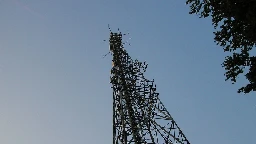Researchers find 'backdoor' in encrypted police and military radios
Researchers find 'backdoor' in encrypted police and military radios

www.vice.com
Researchers Find ‘Backdoor’ in Encrypted Police and Military Radios

Researchers find 'backdoor' in encrypted police and military radios::The TETRA standard is used in radios worldwide. Security researchers have found multiple vulnerabilities in the underlying cryptography and its implementation, including issues that allow for the decryption of traffic.

